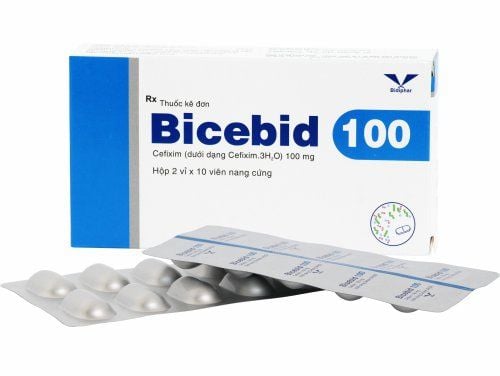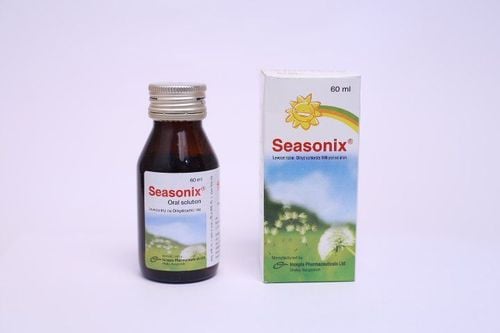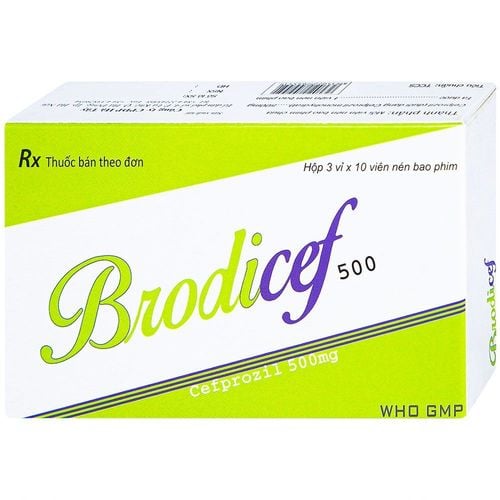This is an automatically translated article.
Children are one of the subjects that are very susceptible to diseases related to the respiratory tract, including tonsillitis. In children, if not treated promptly, tonsillitis will cause dangerous complications affecting the comprehensive development and future health of the baby.
1. What is tonsillitis?
Tonsillitis is an inflammation of the tonsils, swollen lymph nodes on both sides of the back wall of the throat. This condition is very common in children.
The tonsils filter out pathogens in the throat, but when the virus or bacteria are too active, it can cause the tonsils to swell. Difficulty swallowing and refusing to eat are often the first signs of tonsillitis that parents notice in their child.
2. What are the symptoms of tonsillitis in children?
Signs that your child may have tonsillitis include:
Difficulty swallowing Does not want to eat Ear pain (your child can pull on his ear) Persistent sore throat in an infant, toddler, or older child Pain neck or jaw Bad breath Snoring or breathing through your mouth while sleeping Fever and chills Loss of voice Headaches Drooling However, many other throat infections can cause similar symptoms, so your doctor will need to see you. children to accurately diagnose the condition.
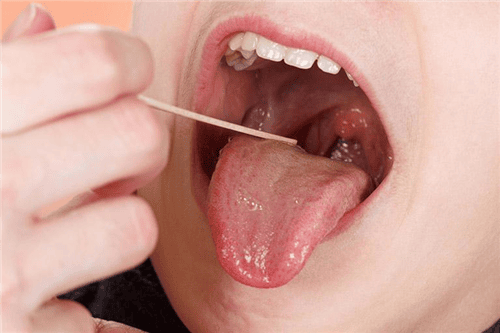
Viêm amidan là tình trạng viêm nhiễm ở amidan, các hạch bạch huyết bị sưng ở cả hai bên thành sau họng
3. How is tonsillitis diagnosed?
The doctor will look inside the child's mouth to see if the tonsils are red, inflamed, and if there are white patches or pus on the tonsils.
The doctor may also feel under the jaw and on the neck to see if the baby's lymph glands are swollen. Like the tonsils, the lymph glands are part of the immune system in the body, and they can become inflamed when infected.
Depending on what the doctor sees during the exam, he or she may order a throat culture to rule out strep throat. This is a common cause of tonsillitis. Preliminary results are available in just a few minutes, but cultures can also be sent to a lab for testing. Those results can take a day or two.
If your child has strep throat, the doctor will prescribe antibiotics for the child. In fact, if strep is suspected but the test results are not available, the doctor may prescribe antibiotics to help the wound start to heal as soon as possible.
It is important to give your child the full range of antibiotics (usually within a 10-day period), even if the child shows signs of getting better within a few days or so. If a child stops taking antibiotics too soon, the bacteria may not be completely killed and may come back stronger. Of course, antibiotics won't help if your child's sore throat is caused by a virus.
Whether the infection is bacterial or viral, you should keep your child at home until they feel much better (and have been given antibiotics, if prescribed, for 24 hours) - for their own health you and prevent others from being easily infected by your child.
4. How to help children with tonsillitis feel better?
You need to make sure your child gets as much rest as possible. In addition, there are a few things you can do to help your child feel better:
Give your child cold drinks or ice, to ease the pain a bit, or warm (not hot) water - like water use or tea. Add a little honey and lemon in warm water for a comforting tonic. Honey soothes the throat and lemon helps reduce mucus. (However, honey should not be given to children under 1 year of age because honey can cause poisoning.) Place a hot water bottle over the child's neck. If your child is older than 3 months, give the correct pediatric dose of acetaminophen or (if your child is 6 months or older) ibuprofen to reduce fever and pain. If your baby is under 3 months old, talk to your doctor before giving any medicine to your baby. (Never give aspirin to a child because aspirin use can lead to Reye's syndrome, a rare but dangerous illness.) Humidify the air. Adding moisture to the air can reduce throat irritation and help your baby sleep more easily. Change the water in the room humidifier daily and clean the unit as directed to prevent the growth of mold and harmful bacteria. Avoid exposing children to cigarette smoke and other air pollutants. They can irritate the throat. If you can teach your child how to gargle, have him or her gargle with warm salt water. Stir 1/2 teaspoon of salt into a certain amount of warm water until dissolved. When the child is done rinsing, make sure he spits the water out. For older children, give them lozenges. This stimulates the production of saliva, which helps to moisten and clear the throat.
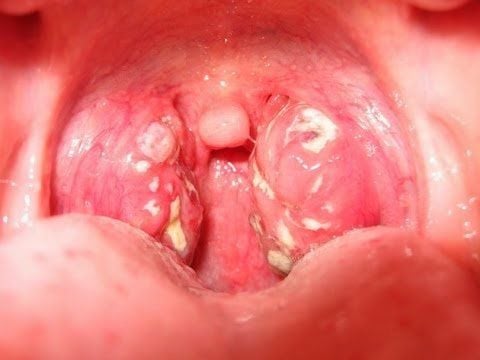
Hình ảnh viêm amidan
5. Is tonsillitis dangerous?
Tonsillitis is a very common disease in children and usually does not pose a danger to the child. However, you need to make time to care for your child - by giving him antibiotics if the cause is bacteria and monitoring for an infection, whatever the cause.
A strep infection if left untreated can progress to an abscess - a collection of pus between the tonsils and surrounding tissues that can cause severe swelling. Rarely, the infection spreads to the bloodstream, neck, or chest. An untreated strep infection can also lead to rheumatic fever, or cause heart problems.
Tonsillitis can cause children to become dehydrated. Because babies have difficulty swallowing, it will be difficult for them to drink enough water that their bodies need. So, be persistent in helping your child drink enough water, even in small sips, and watch for signs of dehydration.
6. Do children with tonsillitis need to have their tonsils removed?
No need to remove tonsils when the child has tonsillitis. In the past, surgery to remove tonsils was quite common. However, doctors today realize that the tonsils serve as a filter for harmful bacteria and viruses. Today, tonsillectomy is performed only when the tonsils become a chronic problem.
Tonsillectomy is generally recommended for children who have:
Recurrent tonsillitis or streptococcal infections Difficulty breathing because of swelling of the tonsils and adenoids (lymphatic tissue behind the nose) Difficulty swallowing Tumors appearing in the throat or nasal passages Swelling mandibular lymph nodes for at least 6 months, even after antibiotics If your child has repeated ear or sinus infections without chronic tonsillitis, the doctor may recommend removal of the adenoma (but not tonsils). Also, if the tonsils are enlarged with swelling of the adenoids, the child may have sleep apnea. Sleep apnea causes breathing during sleep to repeatedly stop and then return to normal.
If your doctor thinks your child needs tonsillectomy and possibly an adenoma, he or she will refer you to an otolaryngologist to discuss the details of the surgery.
7. What does tonsillectomy include?
The surgery is usually done on an outpatient basis, so after a tonsillectomy, the child will only need to stay two to four hours after the surgery, not overnight. There are some exceptions, such as children with chronic health problems that need monitoring.
Before tonsillectomy, the child is not allowed to eat or drink anything (even water) for about 12 hours. That's because if there's anything in the stomach, the child may vomit during the anesthetic, which can be dangerous for the child.
If the child has tonsillectomy, a nurse will take care of the child before and after surgery, the anesthesiologist will discuss the general anesthesia in the operating room before conducting the operation with the surgeon.
The surgeon will remove the tonsils - and adenomas if needed - through the child's mouth without making any incisions in the child's skin. This procedure takes about 30 to 45 minutes.
Your child will likely receive intravenous fluids during and after surgery. The child will then be taken to the recovery room, where nurses will monitor the child until the child is awake and well enough to go home (or into the ward).
In addition, in some cases the doctor may perform an intracystic tonsillectomy. During this procedure, a small amount of tonsil tissue is left to protect the throat muscles, providing less pain and less risk of bleeding during recovery.
The limitation of intracystic tonsillectomy is that in some cases the tonsils grow back enough to cause problems in the future. Intracystic tonsillectomy is not usually performed in children with recurrent tonsillitis.
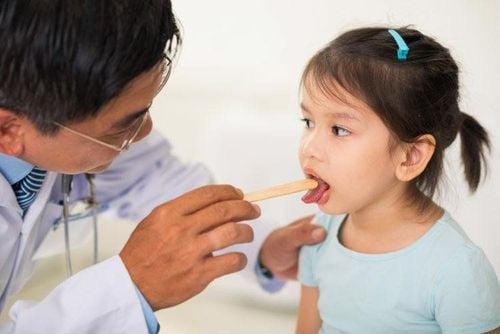
Ca phẫu thuật thường được thực hiện trên cơ sở bệnh nhân ngoại trú
8. Child care after tonsillectomy?
The child will feel extremely uncomfortable. The child's throat will be sore a lot, and the child's ears may also be sore.
Your doctor may prescribe pain medication or prescribe the correct pediatric dose of acetaminophen when needed. Most doctors do not recommend ibuprofen after tonsillectomy because ibuprofen increases the risk of bleeding at the surgical site. (Aspirin is never recommended for children because it can make them more susceptible to Reye's syndrome.)
Also give your child plenty of rest and fluids. Children should be kept away from vigorous physical games for about 2 weeks after surgery.
The child may feel better in a few days, but full recovery may take a week or even two. Children are more susceptible to infections after surgery, so during this time, try to keep them away from people who are sick.
9. Complications after tonsillectomy
After surgery, some complications may occur such as:
Bleeding (other than a little blood in saliva after surgery) Dehydration Frequent vomiting (vomiting once or twice after surgery is normal) usually) Fever above 39 degrees Celsius for a few days (mild fever right after surgery is normal) Difficulty breathing Persistent ear pain (mild earache is normal) Contact your doctor right away if your child has any symptoms any of these.
10. What can children eat after tonsillectomy?
During the first 24 hours after surgery, the child should drink warm water, filtered water, apple juice, ice cubes and gelatin. Don't give your child fizzy drinks or acidic juices, such as oranges or tomatoes, as they will burn your child's throat.
Soft diet is recommended for children after the first 24 hours after surgery. Ice cream or other soft foods can be offered to your baby, such as wheat, mashed potatoes, pasta with butter, pudding, warm soup, yogurt, scrambled eggs, apple sauce, custard, and gelatin.
On the fourth day after surgery, the child can start eating and drinking normally. But for about two weeks after surgery, you should avoid giving your child scratchy foods like potato chips, as this is when the risk of bleeding is highest.
Remember that the more children drink and eat, the better they will start to feel. If your child refuses to eat or drink because his throat hurts, give him pain relievers and coax him to drink water to prevent dehydration.
Humidifiers can help children feel more comfortable.
11. Is there a way to prevent tonsillitis?
If your child is prone to sore throats, keeping them healthy can seem like a long battle, especially once they're in school. You need to pay more attention to the children.
Children need to wash their hands often and not share eating utensils with others. This can significantly reduce the number of infections children get.
Boost your child's immunity as best as possible. Feed your kids a balanced diet and make sure they get some fresh air, exercise regularly, and get plenty of rest.
Vinmec International General Hospital examines and treats common nasopharyngitis diseases, head and neck tumors, congenital malformations of the ear, nose and throat area with the most optimal internal and surgical methods for patients, both children and adults. Coming to Vinmec International General Hospital, patients will receive a direct, dedicated and professional examination from a team of qualified and experienced medical staff.
Please dial HOTLINE for more information or register for an appointment HERE. Download MyVinmec app to make appointments faster and to manage your bookings easily.
Reference source: babycenter.com




